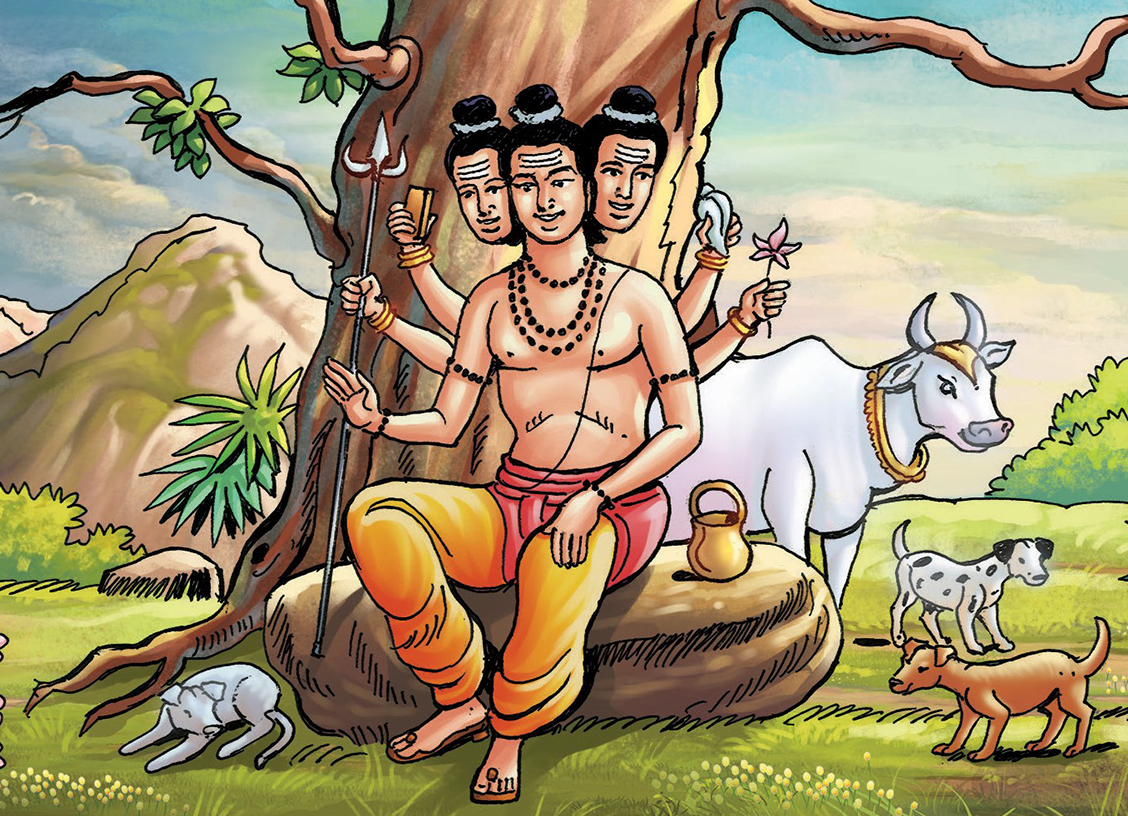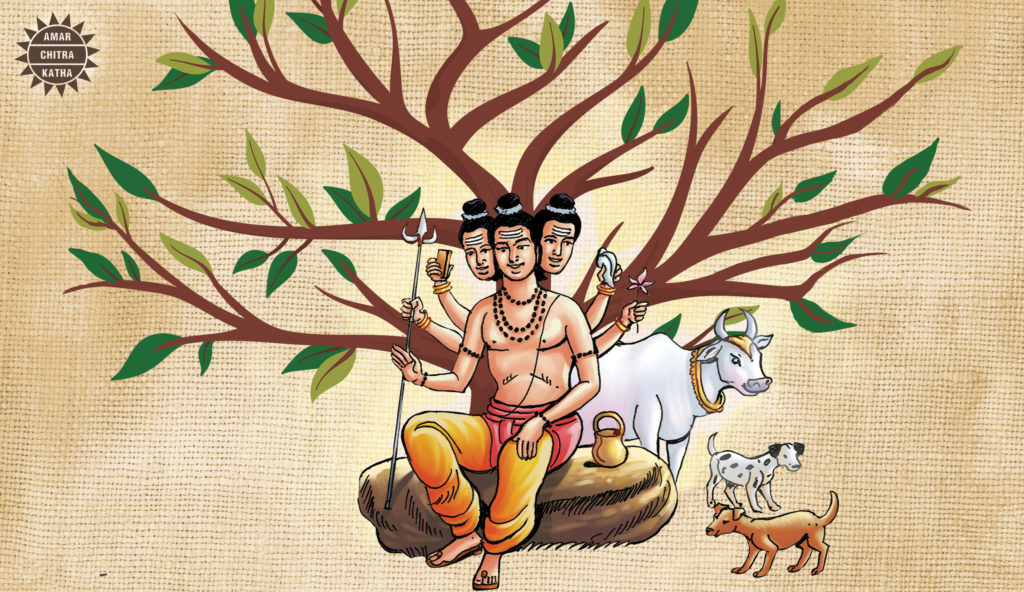Dattatreya and his Gurus
- August 27, 2024


Dattatreya and his Gurus
- August 27, 2024
By Nina Tresa Alex
Teachers’ Day is around the corner and to celebrate this special occasion, Amar Chitra Katha looks at one of mythology’s greatest teachers, who himself learnt from the world around him.
Lord Dattatreya, the son of Maharishi Atri and Anasuya, is considered the supreme guru. Teacher to many kings and sages, he is the combined form of the Trimurtis — Vishnu, Shiva and Brahma.
To receive more such stories in your Inbox & WhatsApp, Please share your Email and Mobile number.
According to Dattatreya, he learnt the secret to a happy, content life from his surroundings. He listed out his 24 elemental gurus and the specific lessons he had picked up from them.
Nature — earth, air, sky, water, fire, ocean, moon, and the sun — constituted the first set of gurus.
Mother Earth, who supports all life unconditionally, teaches us forgiveness and patience. The importance of detachment from worldly disturbances can be learnt from the boundless sky and free-flowing air. Water imparts the lesson of purity as it cleanses everything that it comes in contact with. The all-consuming fire teaches us that like itself, knowledge cannot be suppressed or contaminated. No matter how much water flows into the ocean, it remains stable, just how our emotions must always remain balanced and stable.
The next are the celestial gurus, the sun and moon. Despite waxing and waning, the moon is still the same. This teaches us that bodily changes must not affect our true selves. The sun evaporates water from land, but returns it later as rain. This teaches a sage to accept worldly things without getting attached to them.

Dattatreya was a keen observer of the lives of creatures around him. One day, while a pigeon couple was out seeking food, a hunter trapped their infants in his net. Heartbroken, they also entrapped themselves to be with their babies. This example taught him that worldly attachments cause bondage.
In another incident, a raven was attacked by other birds for its food. Tired, the raven dropped its food for peace. This taught him that mental peace is more valuable than worldly possessions.
The reptiles, the python and the snake, were also his gurus. A python eats whatever it finds and is always content and the snake seeks shelter wherever it can find. Likewise, a sage must seek refuge in temples built by others and accept life without chasing luxuries.
An elephant is trapped by the scent of a female, the deer is lured with music and the fish can be caught with bait. This teaches us the pitfalls of uncontrolled desires and sensual distractions.
The spider that creates and destroys its own web teaches us that our world is temporary. Meanwhile, a moth who falls into a gleaming fire teaches us to be wary of attractions.
Dattatreya observed that the honeybees collect only enough nectar and then spread pollen from one flower to another. This taught him to learn what we need from others and share it generously.
Dattatreya asks us to learn from a child to be innocent and free of worries. We also learn from a beekeeper that just as he takes away the bee’s honey, man has no ownership over anything after death.
He also learnt a lesson about abandoning desires for enlightenment from the life of the dancing girl, Pingala, who reformed after attaining spiritual awakening.
Another lesson was taught by a young maiden who was grinding rice for her guests. She was working in secret but her bangles kept making a clinking sound. She then broke them to get rid of the sound. This taught him that a sage must live in solitude to avoid clashes from too many voices and opinions.
Lastly, Dattatreya learnt the importance of focus from the archer. He once observed an archer so focused on his target that he paid no heed to a king’s procession. This taught Dattatreya the importance of total concentration in spiritual practice.
Read the story of Dattatreya in ACK’s new release, Devas.
To receive more such stories in your Inbox & WhatsApp, Please share your Email and Mobile number.

Comic of The Month
The Naval Journey of India Book I
This book is the first of a three-book series that takes a deep and detailed look at India's Naval History and a deep insight into the lives of our men and women in white. But any series on the Indian Navy has to start at the very beginning - exploring India's celebrated maritime history. Join our little hero, Bharat, and his grandfather, Commodore Sagar, as they sail into the deep blue waters of time. Book I of The Naval Journey of India takes a sweeping look at India's maritime endeavours, how the seas impacted us over millennia and how the oceans made us who we are.